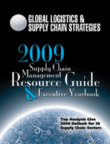
Visit Our Sponsors |
|
|
|
|
|
|
|
|
|
|
|
|
|
|
|
|
|
|
|
|
|
|
|
|
|
|
|
|
|
|
|
|
|
|
|
|
|
|
|
|
|
|
|
|
|
|
|
|
|
|
|
|
|
|
|
|
|
|
|

The notion of global inventory management is no longer new. Since the beginning of this decade, numerous companies have used multi-echelon inventory optimization (MEIO) technology to optimize inventory targets across multiple levels of their supply chain. This technology uses different math and a more detailed accounting of supply and demand variability to produce superior SKU-location level inventory targets versus those produced by traditional ERP and advanced planning and scheduling solutions.
However, take-up of this technology has been painfully slow, in part because organizations are often wary of upsetting the apple cart by changing inventory responsibilities and control within their organization. Inventory is a security blanket-the equivalent of cash under the mattress at each local facility.
Local ownership of inventory targets, sourcing strategies and distribution policies often leads to unnecessary "just in case" inventory stockpiles and "just in case" lead-times. By comparison, holistic policies that take into account the resources and capabilities of a company's entire supply chain network remove this waste. In effect, a MEIO solution identifies and removes the inventory cost bubbles in your supply chain.
The sticking point for many enterprises is that optimal inventory placement across all your network means that inventory target setting is removed from the local level, and local metrics and incentives need to be recalibrated around adhering to the new policies. It's not surprising that many of the adopters of MEIO technology have centralized supply chain management approaches that make it easier to set global policies while letting local facilities and regions manage the daily execution and exception processes.
Identifying Correct Financial Levers
An emerging use of MEIO technology is to help a company discover the underlying cost, service and risk forces in its supply chain-and let it understand which levers to pull to realign resources and execution activity and keep the company on the right financial path.
For many companies, a fundamental danger is that they are operating in a dynamic business environment without clear knowledge of how to harness their underlying supply chain forces to control and improve their financial performance. The more volatile business conditions become, the less they feel in control.
This struggle often materializes as a gap between the "demand" side of their enterprise (e.g., sales, marketing, and forecasting) and the "supply" side (e.g., manufacturing, inventory control, purchasing, and logistics). Each side may point fingers or fight for budget dollars instead of working together to drive optimal financial performance. MEIO technology can identify the true underlying causes of inventory and costs in the supply chain. By presenting an objective financial case, a MEIO solution can help organizations understand whether it matters more to invest in improving the sales forecast, reducing lead-times and variability, changing transportation practices, investing in flexible manufacturing technology, or moving more activity offshore.
The Outlook
Our research shows that freeing cash using MEIO technology can be superior to many other options a company may consider. Cutting operating costs by closing plants, discarding product lines, or reducing the workforce comes with a trail of associated write-downs, extraordinary expenses, and other financial reporting and morale impacts.
In contrast, using a global inventory approach to "fire your inventory" reduces warehouse and transportation workload, softens the impact of product price erosion, enables faster introduction of new products, and protects customer service levels. Although companies have been slow to get on the global inventory management bandwagon, often because of "inventory politics," innovative enterprises will continue to leverage this technology to gain financial advantage in 2009.
RELATED CONTENT
RELATED VIDEOS
Timely, incisive articles delivered directly to your inbox.


